iOS App - Settings Bundle
這裡延續上一篇(用InterfaceBuilder介紹...),繼續介紹Settings Bundle
| 環境:XCode 4.3 |
|---|
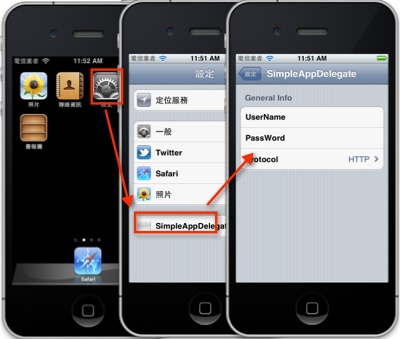 |
| 新增Settings Bundle,並命名為Settings.bundle |
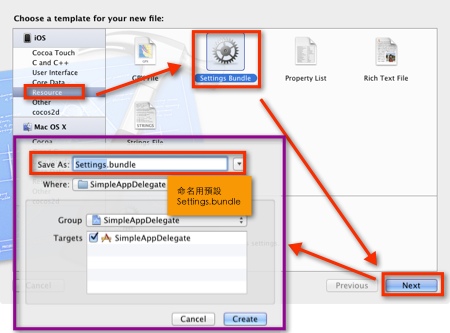 |
 |
| 完成後,可以直接測試[Home鍵->設定->SimpleAppDelegate](參考文章一開始的圖片) |
 |
| 接下來,要自己動手修改內容之前,先看一下支援的物件類別 |
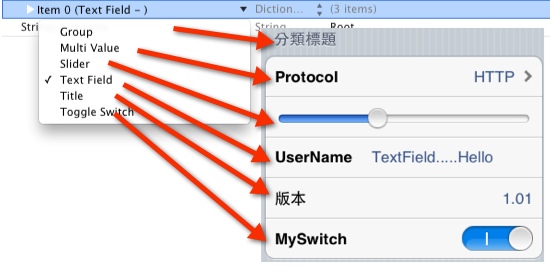 |
| ※在Settings.Bundle的擺放先後順序會影響呈現時候的效果,可以用剪下、貼上的方式進行移動 |
| 物件設定屬性 |
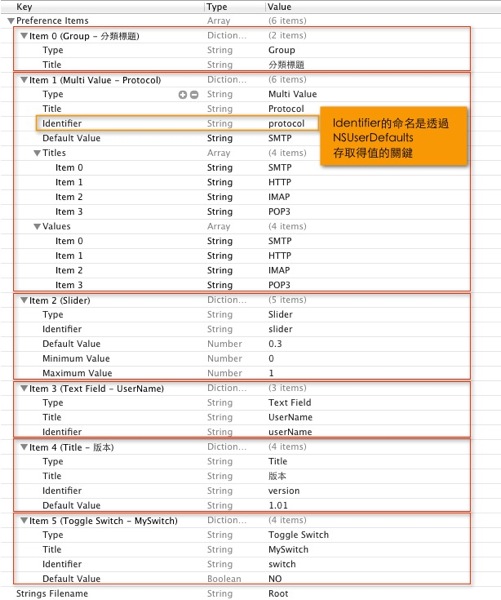 |
| 畫面Layout |
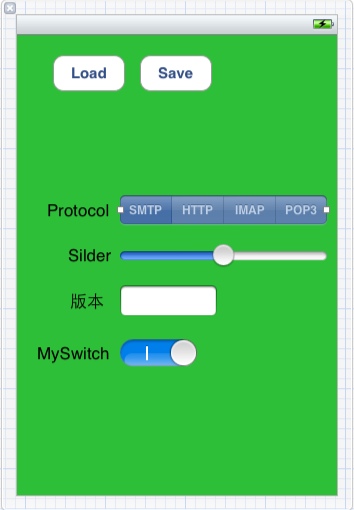 |
| .H程式碼 |
|
#import <UIKit/UIKit.h>
@interface AppDelegate : UIResponder <UIApplicationDelegate> { UIWindow *window_; } @property (strong, nonatomic)IBOutlet UIWindow *window; - (IBAction)buttonLoad:(id)sender; - (IBAction)buttonSave:(id)sender; @property (strong, nonatomic) IBOutlet UISegmentedControl *protocol; @property (strong, nonatomic) IBOutlet UISlider *slider; @property (strong, nonatomic) IBOutlet UITextField *txtVersion; @property (strong, nonatomic) IBOutlet UISwitch *mySwitch;
@end |
| .M程式碼 |
|
#define kProtocol @"protocol" #define kSlider @"slider" #define kUserName @"userName" #define kVersion @"version" #define kSwitch @"switch" //用來取得Settings.Bundle各物件的預設值 -(NSDictionary*)settingsBundleDefaultValues { NSMutableDictionary *defaultDic_ = [[NSMutableDictionary alloc]init]; NSURL *settingsUrl = [NSURL fileURLWithPath:[[NSBundle mainBundle] pathForResource:@"Root" ofType:@"plist" inDirectory:@"Settings.bundle"] isDirectory:YES]; NSDictionary *settingBundle = [NSDictionary dictionaryWithContentsOfURL:settingsUrl]; NSArray *preference_ = [settingBundle objectForKey:@"PreferenceSpecifiers"]; for (NSDictionary *component_ in preference_) { NSString *key = [component_ objectForKey:@"Key"]; NSString *defaultValue = [component_ objectForKey:@"DefaultValue"]; if (!key||!defaultValue) continue; if (![component_ objectForKey:key]) { [defaultDic_ setObject:[component_ objectForKey:@"DefaultValue"] forKey:key]; } } return defaultDic_; } //讀取 - (IBAction)buttonLoad:(id)sender { /* [protocol setTitle:@"SMTP" forSegmentAtIndex:0]; [protocol setTitle:@"HTTP" forSegmentAtIndex:1]; [protocol setTitle:@"IMAP" forSegmentAtIndex:2]; [protocol setTitle:@"POP3" forSegmentAtIndex:3]; */
NSUserDefaults *userDefault = [NSUserDefaults standardUserDefaults]; /* 在執行App之前必須進到"設定"去,去設定App的值 連settings.bundle內對各物件進行設定預設值也沒有辦法一開始就直接被讀取 所以要對NSUserDefault的Key註冊預設值,值的來源是Settings.Bundle的DefaultValue */ [userDefault registerDefaults:[self settingsBundleDefaultValues]];
NSArray *arrProtocol = [NSArray arrayWithObjects:@"SMTP",@"HTTP",@"IMAP",@"POP3", nil];
[protocol setSelectedSegmentIndex:[arrProtocol indexOfObject:[userDefault stringForKey:kProtocol]]]; txtVersion.text = [userDefault stringForKey:kVersion]; [mySwitch setOn:[userDefault boolForKey:kSwitch] animated:YES]; [slider setValue: [userDefault floatForKey:kSlider]];
} //儲存 - (IBAction)buttonSave:(id)sender { NSUserDefaults *userDefault = [NSUserDefaults standardUserDefaults]; NSArray *arrProtocol = [NSArray arrayWithObjects:@"SMTP",@"HTTP",@"IMAP",@"POP3", nil];
[userDefault setObject:[arrProtocol objectAtIndex:protocol.selectedSegmentIndex] forKey:kProtocol]; [userDefault setObject:txtVersion.text forKey:kVersion]; [userDefault setBool:mySwitch.on forKey:kSwitch]; [userDefault setFloat:slider.value forKey:kSlider]; } |